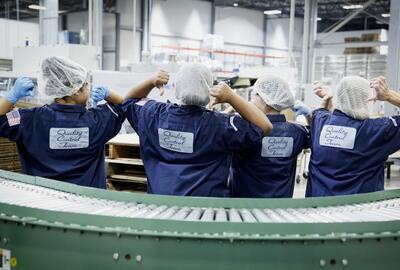Unemployment Rate Drops Back to 3.7%
Job Growth
Following a significantly slower pace of growth in October, November hiring activity accelerated slightly, adding 199,000 new jobs to the economy.
Top Industries
Three sectors accounted for the majority of November’s job creation: healthcare (77,000), government (49,000), and leisure and hospitality (38,000). Manufacturing regained 30,000 workers who moved from picket lines to production lines following the conclusion of recent strike activity. All other sectors were either flat or down (e.g., retail, shipping/warehousing, and temporary help).
Unemployment
The unemployment rate improved, moving from 3.9% in October to 3.7% in November.
Wages
Average hourly earnings rose by 0.4% in November, contributing to a 12-month average increase of 4.0%.
Work Week
The average work week reversed October’s movement, lengthening slightly in November to 34.4 hours.
Temporary Job Trends
The temp sector contracted in November, shedding 13,600 jobs.
What Does It All Mean?
The November labor market might best be characterized as slow and steady. Jobs creation was up, unemployment was down, and wage rates continued to advance at a small but positive pace. All the signs seem to be pointing to that elusive “soft landing” for the economy―inflation hovering around 2%, with enough jobs creation (estimated around 150,000 new jobs every month) to avoid a steep recession.
Perhaps most noteworthy this past month is the slight rise in the labor participation rate, which moved up 0.1 percentage point to 62.8%, its highest level in more than three years.
Pessimists would say that hiring is slowing, especially given the boost of workers returning from the picket lines (30,000 in the auto industry and 17,200 in entertainment). Meanwhile, optimists would highlight the continued steady growth in jobs. The bottom line? The jobs market remains healthy, with people on the move every day.
What’s the key takeaway for employers? There is no good time to ease up on efforts to secure the best talent. Continually be on the lookout for top performers and high-potential candidates. And keep in mind that employee expectations continue to evolve, as should approaches to recruiting and retention.
Sources: U.S. Bureau of Labor Statistics (BLS), CNBC, CNN, Staffing Industry Analysts, MarketWatch, the Associated Press, The New York Times, The Washington Post, Bloomberg






